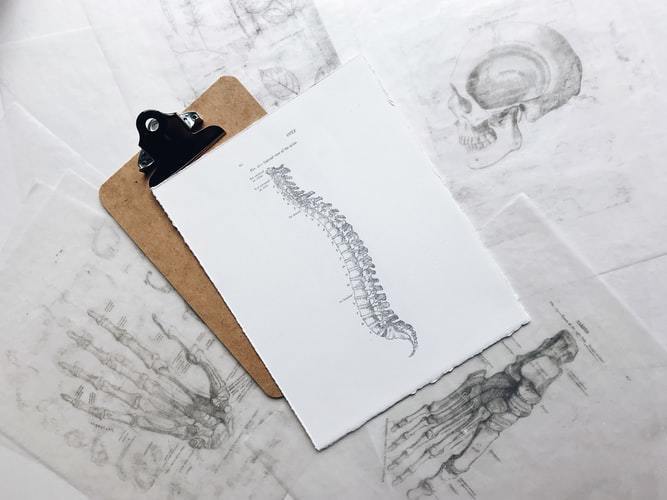
Have you ever felt letdown by a healthcare provider? Far too often in today’s healthcare system, patients’ pains and injuries aren’t properly evaluated. As a result, they don’t receive appropriate conservative treatment nor a game plan to prevent the pain or injury from returning in the future.
As patients, we don’t always know what to expect from our healthcare providers when we seek their help with our pain or injury. The majority of patients aren’t informed about the process of assessment, treatment, and prevention.
In this article, we’re going to give you the tools to become an informed patient, so you can ensure that you’re getting the healthcare you deserve.
Note: though there are many types of ailments and illnesses, for the purpose of this article, we will only discuss musculoskeletal pain and injuries.
The following is the three-part process you should expect from your healthcare provider when seeking help with musculoskeletal pain or injuries:
- Comprehensive Evaluation and Assessment
- Conservative Treatment Options
- Prevention Training
Comprehensive Evaluation and Assessment
It’s essential that your provider assesses your pain or injury thoroughly before moving on to the next two stages of the process: treatment options and prevention training.
If the root cause of the issue isn’t found, complications can occur during the treatment and prevention stages.
Too often, a primary care physician or specialist gives their patient a proper history and consultation, but a very low-level musculoskeletal exam.
In many cases, the doctor doesn’t even assess the muscle tissue, joint function and/or the movement of the patient. Instead, they perform a few orthopedic tests, refer you for diagnostic imaging, just to conclude that you should rest for 6 weeks. They prescribe you some medication to help “manage” your condition.
After the 6 weeks, you’re right back at square one with your pain or injury because the root cause was never discovered.
As the patient, it’s important to understand what you should expect from a comprehensive evaluation and assessment. Your evaluation and assessment should include a working diagnosis and potential indirect causes of the pain or injury. The diagnosis should be specific and clearly communicated.
To determine an appropriate working diagnosis, a comprehensive evaluation should include, but is not limited to:
- A thorough History & Consultation
- Functional Assessment: Assessing weakness, tightness, faulty movement patterns
- Orthopedic Exams, Range of Motion, Neurological testing as needed
- Muscle and Joint Palpation/Testing
- Gait Analysis (if deemed necessary)
The information provided by the evaluation and assessment allows an informed decision regarding the appropriate course of care.
Conservative Treatment Options
After receiving a comprehensive evaluation and assessment, you and your provider can move on to the next step in the process: conservative treatment options.
You deserve to have a comprehensive hands-on approach to your pain or injury. Most patient presentations respond best to a specific combination of therapies. This may include:
- Muscle therapy
- Joint restriction chiropractic adjustments
- Rehab exercises
- Advice on training and preventing further injury
Depending on your pain or injury, you may not need both the muscle therapy and chiropractic adjustments; however; many patients will optimally benefit from all four of the approaches above.
Providers shouldn’t use a “one size fits all” approach with conservative treatment. It is important that your care plan is individualized based on the findings from your comprehensive assessment.
Prevention Training
After deciding on your treatment options, it’s crucial to learn how to prevent the issue from recurring.
It’s very frustrating for both the patient and the doctor when a pain or injury returns.
There are many potential factors that can re-aggravate your injury or symptoms: overuse strain from work, life or sport, not following your prescribed exercises, or the lack of injury prevention training from your healthcare provider.
As an informed patient, these are samples of prevention options you should expect instructions on:
- Activities of Daily Living Training: Many activities we do in our daily life cause physical strain when performed improperly.
- Return to Work/Sport Advice: Proper time frame for return and potential modifications.
- Corrective Exercises: Core stability exercises.
- Desk Ergonomics Tips: Desk sitting is causing many of your conditions
- Proper Equipment Recommendations: Proper running shoes for a runner.
- Skills/Technique Training: Golf swing technique from a teaching professional
Some Final Words:
To summarize, you can avoid a lot of pain, expense, and wasted time by becoming an informed patient.
You should expect this three-step process of care—assessment, treatment, and prevention—from your healthcare provider whenever you seek treatment for a musculoskeletal pain or injury.
To send you off, we’ve outlined some key points that you—now as an informed patient—should expect from your provider when you seek treatment for any musculoskeletal condition.
- A comprehensive assessment including, but not limited to a thorough history, a functional movement assessment, palpation (assessing by hand) of the joints, muscles, tendons, and ligaments.
- An exam that assesses the body as a whole in order to determine the root cause, and does not only focus on the point of pain. For example, Many times a patient with low back pain has hip range-of-motion and mid-back mobility issues that have led to the low back being overworked.
- A specific working diagnosis based on the comprehensive exam.
- Your healthcare provider should explain and discuss your treatment options and offer you a chance to ask questions regarding your plan.
- You should expect to receive advice regarding preventative care for your injury, so once you’re out of pain, you can avoid re-injury or aggravations.
Keep these tips in mind the next time you visit a provider for musculoskeletal pain. As an informed patient, you can make sure that you’re getting the healthcare you deserve.
About Prebish Chiropractic:
At Prebish Chiropractic, we establish open communication with you about your musculoskeletal pain.
We understand the importance of finding the cause of the problem, so we can decide on the best treatment procedures.
If you’re looking for a chiropractor who will ensure you have a comprehensive evaluation and assessment, conservative treatment options, and prevention training, Dr. Andrew Yockey can help you. Call today to schedule an appointment with Prebish Chiropractic Centre!





